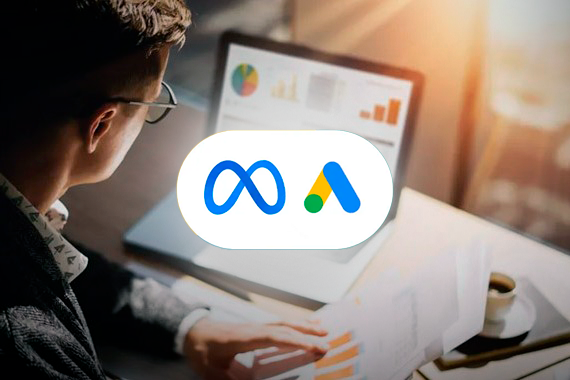Attention is the new currency online. Every business that sells, signs up users, or builds an audience needs predictable, scalable traffic — and that’s exactly where traffic managers come in. If you’ve seen job posts for “performance marketer,” “paid media manager,” or “traffic specialist” and wondered what the role actually is (and whether it’s worth pursuing), this article breaks it down clearly and practically.
You’ll learn what traffic management means in 2025, why companies pay for it, the core skills and tools you’ll need, common career paths, how to get started, and a short action plan so you can move from curious to competent fast.
What traffic management actually is
Traffic management is the art and science of bringing qualified visitors to a website, landing page, or app using a mix of paid and — sometimes — coordinated organic tactics. A traffic manager focuses on paid channels (ads) and the systems around them to produce predictable outcomes: leads, sales, app installs, or other conversions.
Key responsibilities usually include:
- Strategy: choosing channels, audiences, goals, and budgets.
- Campaign setup: building ads, audiences, and conversion events.
- Tracking & analytics: installing pixels/tags, measuring results, and ensuring data integrity.
- Optimization: testing creatives, bids, placements and adjusting to improve metrics (CTR, CVR, CAC, ROAS).
- Reporting & communication: translating numbers into clear recommendations for stakeholders.
- Scaling: identifying winners and allocating budget to maximize return.
In short: a traffic manager gets the right people to the right place for the right price — repeatedly.
Paid vs. organic — why traffic managers mostly focus on paid
Organic tactics (SEO, content marketing, social posts) are essential long-term, but they’re slow and uncertain. Paid traffic gives businesses control: target specific audiences, set budgets, and get results quickly. That control is why most companies hire traffic specialists.
Paid channels you’ll encounter most:
- Search (Google Ads, Microsoft Ads)
- Social (Meta / Facebook & Instagram, TikTok, LinkedIn, X)
- Video (YouTube ads)
- Programmatic/display networks and native ads
Organic and paid work best together — paid can amplify content and kick-start funnels while organic builds sustained volume — but traffic managers are usually judged on their paid performance.
Why this career is in high demand
Several market forces drive demand for traffic managers right now:
- More businesses sell online. E-commerce, digital services, and local businesses use ads to compete for attention.
- Platforms get more complex. Ad platforms roll out new formats, targeting options, and privacy features. Specialists save businesses time and money.
- Accountability matters. Paid media is measurable. Companies want specialists who can link spend to revenue (or to lead value).
- Performance-driven budgets. Marketing leaders increasingly shift budget to channels with clear ROI, creating steady demand for performance-focused talent.
- Remote and freelance-ready. The role adapts well to remote work and freelance contracts, increasing opportunities globally.
Because results are both measurable and valuable, businesses will keep paying for people who can reliably deliver them.
Core skills and tools you need to learn
You don’t need to know everything at once, but a fast path to competency focuses on a tight set of skills.
Technical & analytical:
- Ad platforms: Meta (Ads Manager), Google Ads, TikTok Ads, LinkedIn Ads basics.
- Tracking: Facebook/Meta Pixel, Google Tag Manager, server-side tracking basics, UTM conventions.
- Analytics: Google Analytics / GA4 (events, conversions, funnels), and reporting tools (Looker Studio).
- Data comfort: Excel/Google Sheets for pivot tables, basic formulas, and extracting insights.
- CRO fundamentals: landing page testing, understanding friction points, basic A/B methodology.
Creative & communication:
- Copywriting for ads: short, punchy, benefit-led hooks.
- Creative briefing: how to suggest visuals/video concepts that match platform norms.
- Client communication: translating metrics into business decisions and setting expectations.
Tools you’ll use often:
- Meta Ads Manager, Google Ads, Google Analytics (GA4), Google Tag Manager
- Looker Studio (Google Data Studio), Hotjar/FullStory (qualitative insights)
- Canva/Figma (quick creative mockups), Zapier (automation)
- Reporting templates and simple dashboards
Typical career paths and earning routes
Traffic management offers flexible career trajectories:
- Freelancer / Consultant: Work with small businesses or startups. You control client mix and rates; growth depends on results, niching, and referrals.
- In-house performance marketer: Work inside one company to scale paid channels. Expect deeper product knowledge and stability.
- Agency traffic manager / specialist: Handle multiple clients and accounts. Good for rapid learning and exposure to varied verticals.
- Performance/optimization specialist: Focus on CRO or analytics rather than ad buying — ideal for data-first people.
- Scaling into leadership: Senior roles lead performance teams, strategy, or the entire paid media function.
Earnings vary by geography, experience, and client type. What matters most is demonstrable results: ROI, CAC improvements, and validated processes.
How to get started — a practical roadmap
You don’t need a marketing degree. Follow this practical path:
- Learn the basics (week 1–2): Free courses from Meta Blueprint and Google Skillshop, plus short YouTube tutorials on practical campaign set-up.
- Practice with small budgets (week 3–4): Run $5–$20/day campaigns for a personal project, blog, or a friend’s small business. Focus on learning, not profit.
- Master tracking (week 4–6): Install pixels, set up conversion events, learn UTM tagging and GA4 funnels.
- Document results (ongoing): Turn experiments into mini case studies: objective → hypothesis → test → result.
- Build a simple portfolio & offer audits: Offer a free or low-cost audit to 3 small businesses to get results and testimonials.
- Start charging and refining your offer: Use a simple pricing model (flat retainer or % of ad spend), and be clear about deliverables.
Keep experiments cheap and repeatable; early wins matter more than big budgets.
Common mistakes to avoid
- Poor tracking: If conversions aren’t tracked correctly, you can’t optimize.
- Testing too many variables at once: Isolate one change per test to learn what moves the needle.
- Copying winners without understanding why they work: Context matters — an ad that works for one brand might fail for another.
- Ignoring creative fatigue: Even high-performing ads need refreshes.
- No clear goals or SLA with clients: Define KPIs, timelines, and reporting cadence from the start.
A typical day in the life (quick snapshot)
- Check campaign performance and alerts first thing.
- Pause/scale sets based on primary metrics (cost per conversion, ROAS).
- Set up or review A/B tests for creatives or audiences.
- Sync with client or team to align on upcoming launches.
- Prepare a concise daily/weekly report and next-step recommendations.
Next steps — a short 30-day plan you can start today
Week 1: Complete Meta and Google beginner lessons; set up a practice ad account.
Week 2: Run a basic traffic campaign for a mock landing page; measure CTR and CPC.
Week 3: Install and test tracking (pixel, GA4); create a simple Looker Studio dashboard.
Week 4: Offer a free audit to one local business; present findings and a low-budget test plan.
If you complete this mini-plan, you’ll have hands-on experience, a basic toolkit, and something to show clients.



